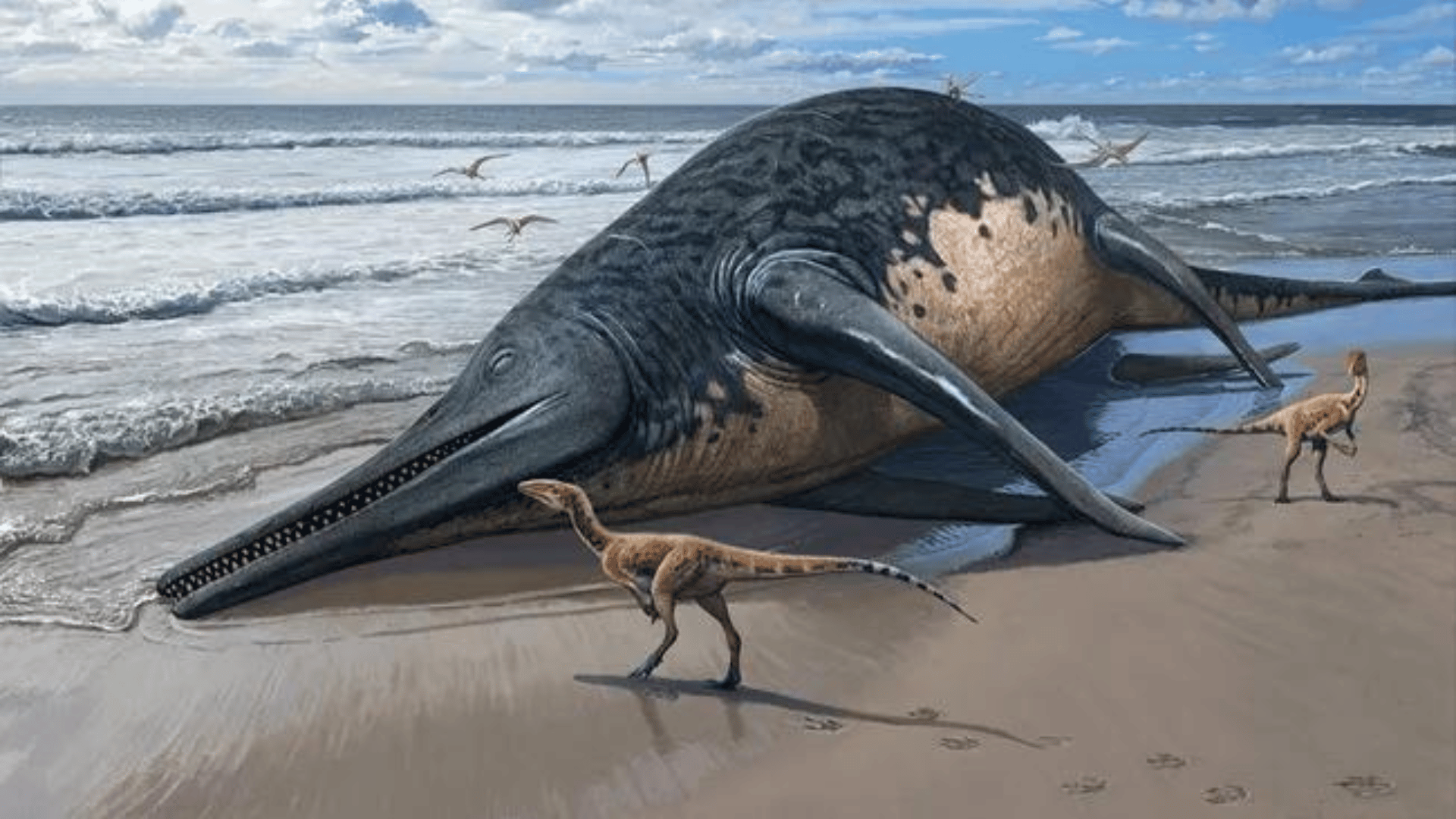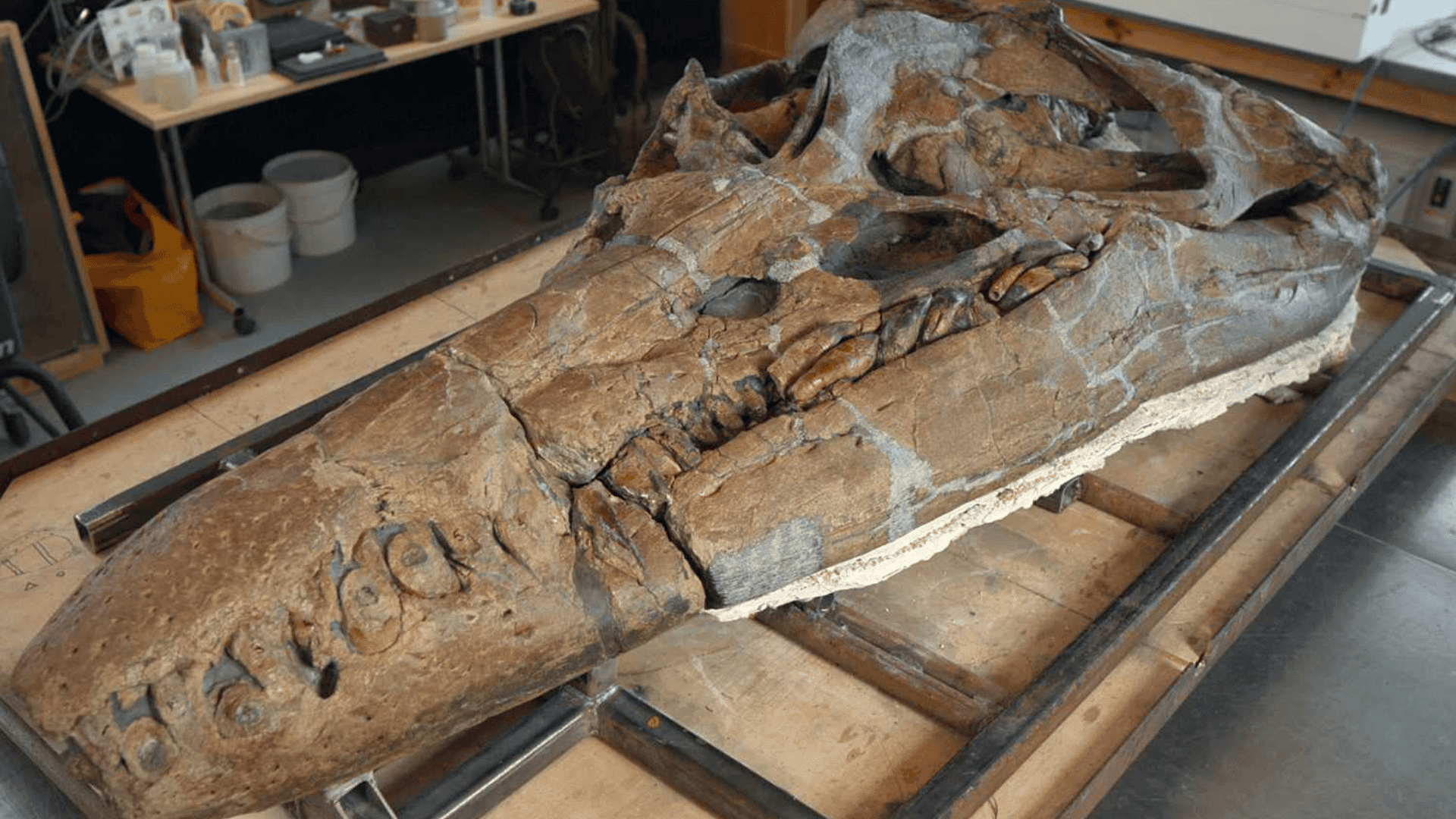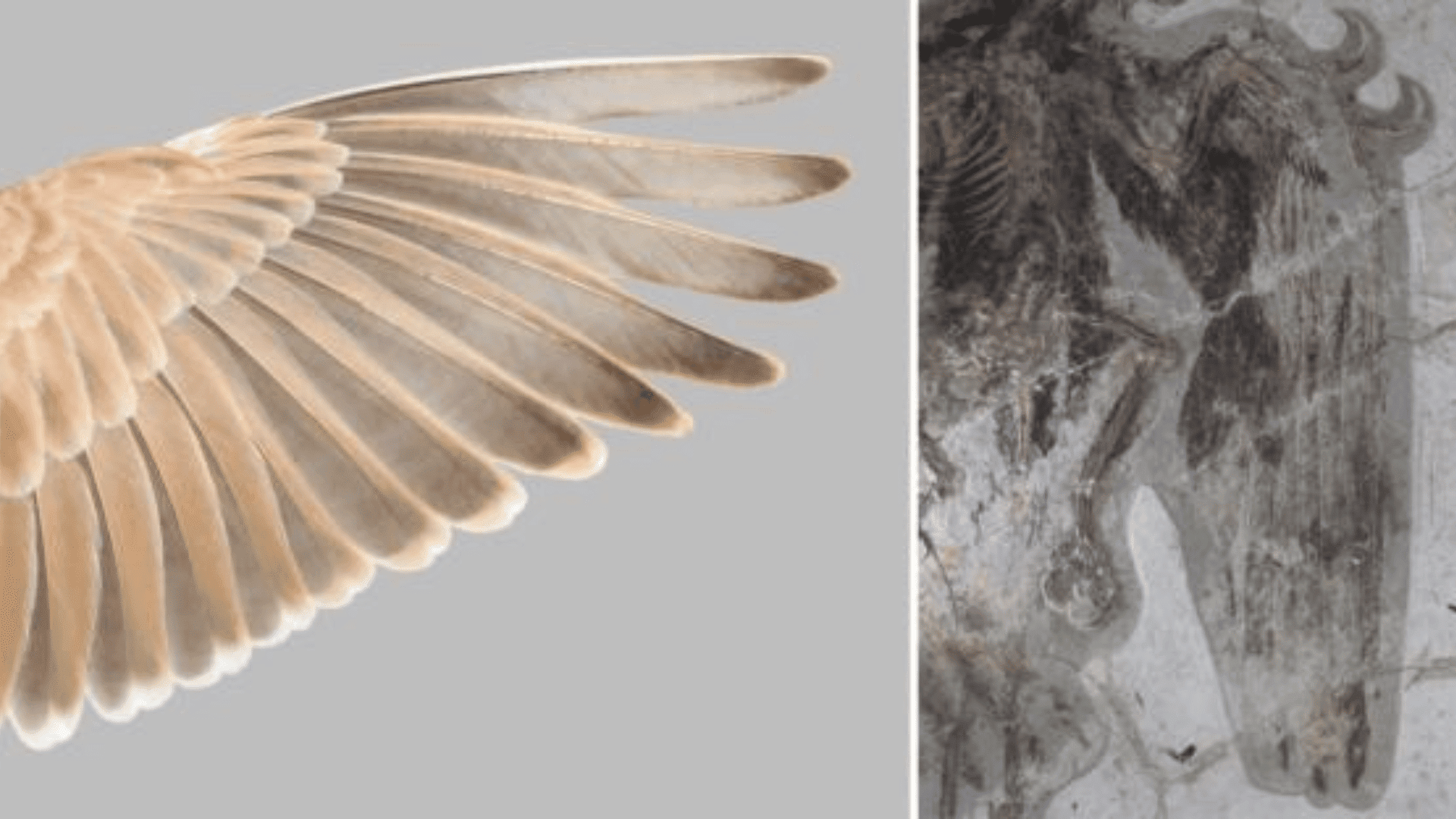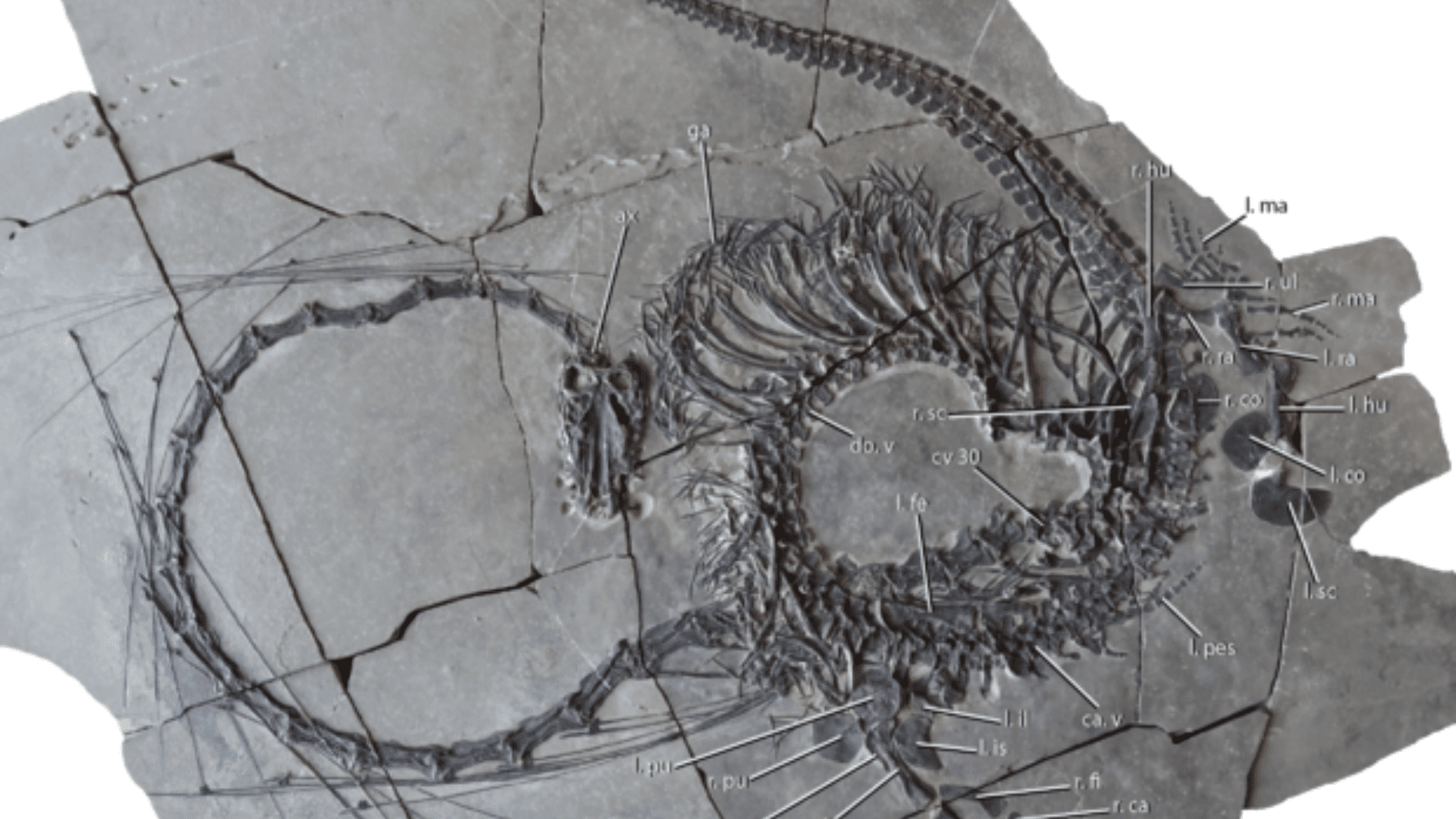Scientists discovered the fossil of a second gigantic jawbone, measuring more than 6.5 feet long, on a beach in Somerset, UK. They identified the “giant fish lizard” bones as belonging to the jaw of a new species of ichthyosaur, a type of prehistoric marine reptile that could be the largest ever discovered.

Justin and Ruby Reynolds, a father and daughter from Braunton, originally found the first pieces of the second jawbone in 2020 while searching for fossils on the beach. After realizing they had uncovered a significant fossil, they contacted leading ichthyosaur expert, Dr. Dean Lomax, a paleontologist at The University of Manchester.
Dr Lomax then contacted Paul de la Salle, a seasoned fossil collector who had found the first giant jawbone in May 2016. Justin and Ruby then joined Paul and Dr. Lomax to search for more pieces of the creature. The team eventually uncovered 11 more fragments that seamlessly fit together, which allowed them to piece together a bone at the back of the jaw known as a surangular.
“I was highly impressed that Ruby and Justin correctly identified the discovery as another enormous jawbone from an ichthyosaur. They recognized that it matched the one we described in 2018. I asked them whether they would like to join my team to study and describe this fossil, including naming it. They jumped at the chance. For Ruby, especially, she is now a published scientist who not only found but also helped to name a type of gigantic prehistoric reptile. There are probably not many 15-year-olds who can say that! A Mary Anning in the making, perhaps.” stated Dr. Lomax.
Explore Tomorrow's World from your inbox
Get the latest science, technology, and sustainability content delivered to your inbox.
I understand that by providing my email address, I agree to receive emails from Tomorrow's World Today. I understand that I may opt out of receiving such communications at any time.
The research team has revealed that the bones belong to a new species of giant ichthyosaur that would have been approximately the size of a blue whale. The team has named the new genus and species Ichthyotitan severnensis, meaning “giant fish lizard of the Severn.”
The bones date back to the end of the Triassic Period, making them approximately 202 million years old. This was during a time when dinosaurs walked on land, before the Late Triassic global mass extinction event which caused the giant ichthyosaurs to go extinct.
Though this period is known as the age of dinosaurs, these creatures aren’t considered dinosaurs as they evolved from a different group of reptiles. Their evolutionary path more closely resembles whales which evolved from terrestrial mammals before returning to the sea. Also similar to whales, the species could breathe air and gave birth to live young.
Though this species isn’t the first known giant ichthyosaur, the bones appear roughly 13 million years after their latest geologic relatives. Additional examinations of the bones by University of Bonn master’s student Marcello Perillo have confirmed that the creature was still growing at the time of its death.
The sediments containing the specimens also included rocks that indicated earthquakes and tsunamis had occurred during this time, which could relate to the mass extinction event as it suggests the species lived during a time of increased volcanic activity. This discovery will soon be displayed at the Bristol Museum and Art Gallery.







